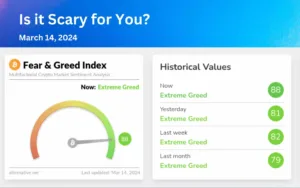Bitcoin, the world’s first decentralized cryptocurrency, has revolutionized the financial landscape since its inception. Created by an anonymous person or group using the pseudonym Satoshi Nakamoto, Bitcoin introduced a groundbreaking concept that challenged traditional monetary systems. Let’s delve into the origin of Bitcoin and explore the key milestones that have shaped its remarkable journey.
2008: The Birth of Bitcoin
In October 2008, a whitepaper titled “Bitcoin: A Peer-to-Peer Electronic Cash System” was published by Satoshi Nakamoto. The whitepaper outlined the core principles and technical details of a digital currency that would operate on a decentralized network called the blockchain. This marked the official introduction of Bitcoin to the world.
Widely believed to be a false name, the person behind Satoshi Nakamoto has never been discovered.
2009: Genesis Block and Mining
A genesis block is the first block in a blockchain which is a series of blocks joined together. These blocks are joined using codes called hash keys.
On January 3, 2009, the Bitcoin network came into existence with the mining of the first block, known as the Genesis Block. Embedded within this block was a message referencing a headline from The Times newspaper: “The Times 03/Jan/2009 Chancellor on the brink of second bailout for banks.” This message symbolized the intent to create an alternative financial system.
2010: First Bitcoin Exchange and First Transaction
In March 2010, the first Bitcoin exchange, BitcoinMarket.com, was established, allowing users to trade Bitcoin for fiat currencies. This development provided a platform for individuals to buy and sell Bitcoin, further promoting its adoption and paving the way for future cryptocurrency exchanges.
On May 22, 2010, Laszlo Hanyecz bought a pizza with 10,000 Bitcoins marking it the first-ever purchase with Bitcoin as a medium of exchange. Since then, May 22 has been celebrated as Bitcoin Pizza Day.
2011: Widening Acceptance
In 2011, Bitcoin began gaining traction as a medium of exchange. The Electronic Frontier Foundation (EFF), a prominent digital rights organization, started accepting Bitcoin donations. Additionally, the first online retailers, such as WordPress and BitPay, began integrating Bitcoin as a payment option, expanding the utility and acceptance of the cryptocurrency.
Between February to April 2011, Bitcoin gained first parity with the US Dollar by achieving the $1 price per Bitcoin. At the end of April 2011, it had gained a price of $2.68.
2013: Bitcoin’s Price Soars
The year 2013 witnessed a significant milestone for Bitcoin in terms of price appreciation. In April, Bitcoin’s value surged to over $200, attracting widespread media attention. Subsequently, in November, Bitcoin surpassed the $1,000 mark for the first time, sparking a period of intense interest and speculation in the cryptocurrency market.
2014: Mt. Gox and Regulatory Developments
The year 2014 brought both challenges and regulatory advancements for Bitcoin. Mt. Gox, one of the largest Bitcoin exchanges at the time, filed for bankruptcy following a massive security breach. This incident highlighted the need for robust security measures in the cryptocurrency ecosystem.
Simultaneously, regulatory frameworks around the world began taking shape, with countries like the United States and Japan introducing guidelines to govern Bitcoin exchanges and transactions.
2017: Bitcoin’s Historic Bull Run
On September 1, 2017, Bitcoin crossed $5000 for the first time ever.
2017 witnessed an unprecedented surge in Bitcoin’s value, leading to widespread attention and euphoria. Bitcoin reached its all-time high in December, surpassing $19,000 per coin.
The remarkable bull run attracted mainstream investors and media coverage and sparked a wave of interest in cryptocurrencies globally.
2020: Institutional Adoption and Halving
In 2020, several notable institutions, including MicroStrategy and Square, allocated significant portions of their treasury reserves to Bitcoin. This institutional adoption further validated Bitcoin as a store of value and hedge against inflation.
Additionally, in May 2020, the third Bitcoin halving event occurred, reducing the block reward for miners and effectively decreasing the rate of new Bitcoin supply.
2021 Bitcoin’s Current All-Time High
In 2021, Tesla invested $1.5 Billion in Bitcoin, which marked the celebrated billionaire and entrepreneur Elon Musk and his company Telsa’s entry into Bitcoin. This resulted in a $140 Million loss in Telsa’s balance sheet, which it disclosed in 2022.
Bitcoin achieved the current all-time high of $69,010 on November 10, 2021.
2022: The Great Crypto Winter
The year 2022 saw a big dip in crypto prices and several projects going to dust.
Bitcoin’s price dropped to $35,000 by January 22, 2022. The price reversed back to $47,000 by March but ultimately dropped to $15,516 on November 21, 2022.




